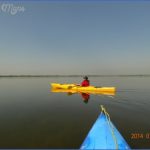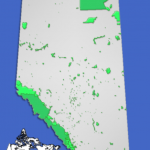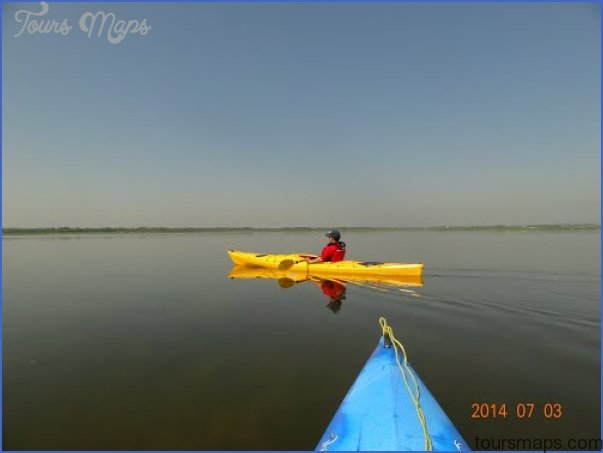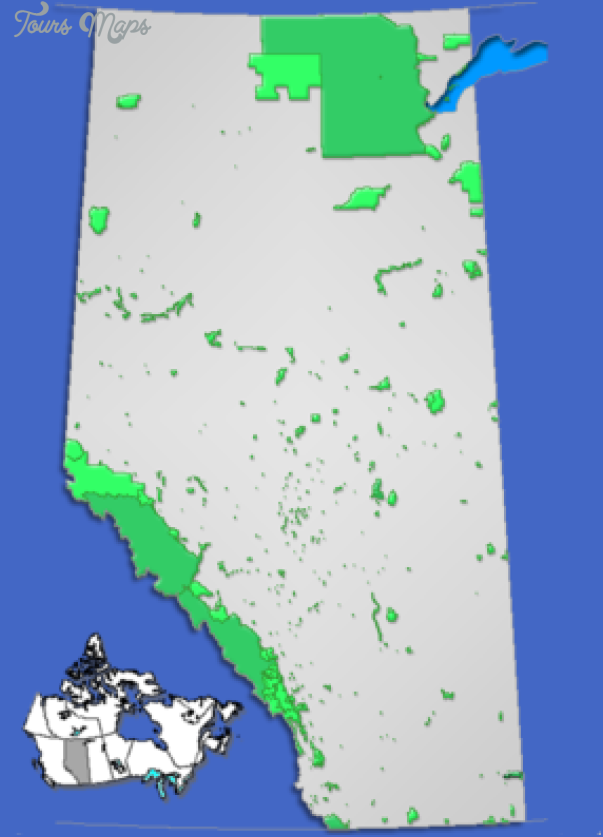Location: Travel north on St. Albert Trail (Hwy 2), turn left onto 137th Avenue (before entering St. Albert), then right onto Sir Winston Churchill Avenue (184th Street), and left onto Levasseur Road, which becomes Riel Drive. Leave your vehicle at the St. Albert Rugby Football Club parking lot, or drive farther along Riel Drive and turn left on Rodeo Drive to reach the gravel parking lot by the gazebo.
Info: 780-960-8170; 1-800-427-3582.
Lois Hole Centennial Provincial Park contains the former Big Lake Natural Areaa shallow wetland surrounded by small deciduous and mixed coniferous woodlands. A centennial legacy, the park was established in 2005 to honour the late lieutenant-governor Lois Hole’s passion for Alberta youth, education, and the environment. Birdlife International, a worldwide partner of non-governmental conservation organizations, recognizes Big Lake as an Important Bird Area.
The lake provides essential bird habitat and is a major waterfowl moulting and staging area. You may find great numbers of tundra swans and Franklin’s gulls here. Look for tundra swans during spring breakup in April and early May as they fly north to the still-frozen Arctic breeding grounds. Most fall migration occurs in October. One fall, the lake’s bird population included 20,000 swans.
Big Lake is also designated a globally significant Important Bird Area because of the vast variety of species found here throughout the year. In the late 1990s, 10,000 northern pintails were recorded during spring migration. Osprey and bald eagle sightings are increasing, and Eurasian widgeons are spotted every year. Upon their return from southern Peru and northern Chile, Franklin’s gulls settle in the western bay, where they attach floating nests to aquatic plants.
A threatened species, the peregrine falcon can be seen hunting in the park. Highly regarded for swift flight, grace, and splendour, these falcons were likely released as captive-bred young from the peregrine falcon reintroduction program in Edmonton. Watch for falcons along the shoreline at dawn and dusk as they hunt on the wing, capturing small perching birds, as well as larger species like ducks. Possibly the fastest of all birds, a peregrine falcon can dive at speeds near 320 kilometres per hour.
Big Lake is part of the 260-kilometre-long Sturgeon River system that flows east to the North Saskatchewan River. This river system is one of only three bird’s-foot deltas in the province, with many distributaries extending outward to create the appearance of a bird claw.
Located on the eastern shore of Big Lake, the John E. Poole Wetland is connected to Lois Hole Centennial Provincial Park and the City of St. Albert’s trail system The trail at this Ducks Unlimited interpretive site takes you along a boardwalk and past interpretive signs and critter dipping stations. You will find benches and picnic tables.
Often mentioned in St. Albert history, Big Lake was important to settlers who hunted, fished, and trapped. The community used the river and lake for drinking water well into the 1900s. Artifacts such as tools and weapons found on the lake’s eastern and southern shores prove the presence of a community 5,000 years ago, though archaeologists suspect nomadic people used Big Lake as early as 9,000 years ago.
Lois Hole Centennial Provincial Park Photo Gallery
Maybe You Like Them Too
- NIGHT SKY ETIQUETTE
- Ukrainian Cultural Heritage Village
- Strathcona Wilderness Centre
- EAST OF EDMONTON MAP
- Boyle Edmonton Map




